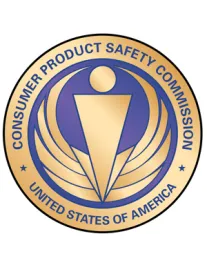Every two years, a little-noticed provision of the Consumer Product Safety Act (CPSA) reshapes the regulatory reporting landscape for manufacturers and importers of consumer products in the United States.
CPSA Section 37 requires these companies to report information about settled or adjudicated lawsuits. Section 37 was added in 1990 in response to concerns that companies were not reporting enough potential hazards in their products. Per Section 37, companies are required to notify CPSC of (1) plaintiff’s verdicts or settlements, (2) arising from lawsuits challenging the company’s product, that (3) involve “grievous” injury or death, (4) provided that three or more such verdicts or settlement occur within a designated two-year time period.
The CPSA provides much of the statutory authority for the activities of the U.S. Consumer Product Safety Commission (CPSC), whose mission is to enforce consumer product safety. The agency is best known for its enforcement of Section 15 of the CPSA, which requires affected companies to report “defects,” “substantial product hazards,” “unreasonable safety risks,” or violations of safety standards by their products. Some, but certainly not all of these reports culminate in product recalls.
Although CPSC officials say the standards for Section 15 reporting have not changed, the reality is that our society’s tolerance for injury risk has gone down considerably in recent decades. As a result, and further because of the sizeable penalties that can be imposed (more than $16 million), Section 15 is a statute with which many in-house lawyers have become quite familiar.
Against this backdrop, it is easy to forget about Section 37. Whereas Section 15 usually requires companies to assess the likelihood of a substantial product hazard or defect — qualitative terms that can produce broad disagreement —Section 37 has little ambiguity. A company has either been sued over a consumer product or it has not. A case has either been settled/resolved at trial or it has not. The injuries involved either reached a certain level of seriousness or they did not. And the required number of settlements or trial verdicts either happened during the relevant time period or it did not. Section 37 is the backup mechanism for Section 15: no matter how clever you are or how bizarre your perspective is on what a substantial product hazard or defect might be, there is virtually no room for interpretation with Section 37.
The title of this post referenced a “clean regulatory slate.” As it so happens, the two-year time period covered by Section 37 runs from January 1 of each odd-numbered year through December 31 of the following even-numbered year. This means that on January 1, 2021, companies with consumer legal responsibilities could breathe a sigh of relief, provided they had not already accrued three or more pertinent verdicts or settlements between 2019 and 2020.
How to Know If Your Company is in Compliance
First, if you are responsible for your company’s CPSC compliance, but are not sure whether your verdict or settlement history qualifies for Section 37 reporting, please contact us. With potential penalties exceeding $16 million, this is not something that should be left to chance.
Second, reporting the fact of a lawsuit settlement is not the same as reporting the amount of the settlement. Section 37 explicitly provides that companies need not disclose amounts of settlements under Section 37 or any other section of the same chapter (which presumably means Section 15 reporting cannot require this either).
Finally, while compliance with Section 37 is important, we suggest that companies keep in mind the bigger picture. It is rare for a series of events to be reportable under Section 37 and not at least arguably reportable as well under Section 15. The fact that Section 37 has even come into play suggests that some larger issues may beat work. Suppliers need to see Section 37 for what it is: a backup monitoring system for CPSC, not as a means to ignore what Section 15 already requires.



 />i
/>i

